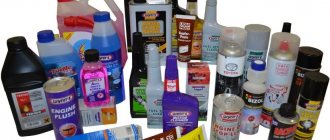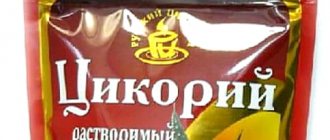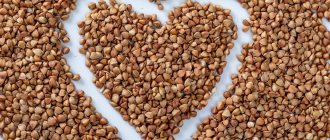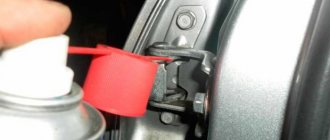Gas equipment requires special attention and accuracy in operation: we should not forget about the many examples of household gas explosions. In 2018, on December 31, a similar disaster destroyed 40 apartments, people found themselves under the rubble when the frost outside was below 20 degrees. Therefore, if any problems arise with gas equipment, the best solution is to call a specialist.
Quite often, the breakdown turns out to be minor - the tap on the stove, riser or column turns tightly. Often repairs come down to replacing the lubricant. The craftsmen prudently do not disclose the brand, but from GOST standards the Miss Clean resource found out how to lubricate a gas tap without compromising safety.
Where are they used?
Industrial gas equipment includes devices designed for transportation and storage, processing and distribution of gas. The main components of the complex are pipeline fittings, gas control units, pressure regulators, safety valves, gas analyzers, gas flow metering devices, boiler units. Seal lubricants are used to lubricate rotating equipment elements. They are one of the types of grease. Unlike oils, such formulations include thickeners and additives that enhance the properties of the substance. The thick composition of lubricants minimizes friction in rolling bearings, hinge, chain and screw mechanisms.
Greases are perfectly fixed on inclined surfaces; their density seals the joints of parts. They are able to withstand high temperatures. Premium class compounds used for gas equipment do not drip from the devices even if the operating temperature limit is exceeded.
Greases are divided according to their areas of application into the following:
- Antifriction - protecting mechanisms from wear. Depending on the conditions of use, they may have a combined set of properties: withstand frost or high temperatures, withstand the effects of chemically aggressive environments, and exhibit stability in conditions of high humidity.
- Sealing - necessary for sealing joints.
- Highly specialized - created for use in a specific industry, for example, food, chemical.
- Conservation - protecting equipment during shutdown.
Lubricants for gas equipment are classified as anti-friction and sealing lubricants. They must withstand loads, create a dense film between rubbing parts, ensure smooth movement, and remain on the surface of the joints.
Note! Lubricants can react with metal, causing additional corrosion. Such compositions are unacceptable for use in the treatment of gas systems. The lubricant should be as dense as possible and the moisture content should be minimal.
Characteristics
Sealing lubricants are divided into 3 types:
- Reinforcement.
- Threaded.
- Vacuum.
Reinforcement lubricants are intended for sealing fittings of gas mains, distribution stations, taps and threaded connections. Lubricants “For gas taps” are widely used, which include:
- base - castor oil;
- thickener - calcium soap.
There is also a more heat-resistant composition used for sealing shut-off devices in oil and gas fields - Armatol-238. It includes:
- base - emulsion of castor and synthetic oils;
- thickener - aerosil;
- graphite.
Lubricants have parameters (using the example of Armatol-238):
- Dropping point - shows the melting temperature of the thickener and the disruption of its structure, after which drop formation begins (160°C).
- Penetration indicator - reflects the thickness of the lubricant. It is equal to the number of mm of immersion of the measuring device cone, multiplied by 10 (10-1 at 25°C).
- Shear strength is the load at which irreversible disruption of the frame bonds occurs (up to 150 Pa).
- Viscosity - shows losses due to internal friction (less than 150 Pa-s at 0°C).
- Colloidal stability - the degree of release of oil from a lubricant under the influence of external forces and temperature (up to 15%).
- Corrosion stability - the ability to cause metal corrosion (—).
- Water content (up to 0.5%).
Also in lubricants, the degree of solubility in various chemical compounds, the content of foreign impurities, and main components are determined.
Thread lubricants are intended for sealing joint joints of pipes of pumping and compressor equipment, gas condensate wells. In industry, the use of the P-402 composition is widespread, which includes:
- petroleum oils;
- organosilicon compounds;
- thickeners in the form of lithium and aluminum stearates;
- graphite, zinc, copper, lead.
Thread compound is characterized by increased heat resistance (-50...200C), low moisture content (up to 0.1%).
If it is necessary to create a vacuum environment, use vacuum lubricants. They are unstable and can only be used at temperatures of -10...40°C, but they are distinguished by high water resistance and preservation characteristics.
Storing gas equipment in a warehouse involves the use of lubricants: gun lubricant (GOST 19537-83), as well as conservation oil (GOST 18974-73). In addition to purchased lubricants, they use compositions made from heated instrument oil and paraffin crumbs dissolved in it, as well as from wax, turpentine and anhydrous fat.
What to lubricate
General requirements: the lubricant must withstand high pressure, be resistant to wear and frequent loads, and most importantly, be heat-resistant. This is what distinguishes the special product from ordinary graphite.
The standards offer the following options:
- Plitol M is a lubricant based on thickened petroleum oil and contains an additive that increases the wear resistance of the layer and parts. This product can easily withstand temperature loads of up to 150 degrees, a one-time increase to 180 degrees, however, it is intended only for indoor devices, because it loses its properties at temperatures below 0.
- For gas taps - a product for gas lines based on thickened castor oil. This lubricant only holds 50 degrees, which means it cannot be used on the stove. At the same time, the lubricant tolerates pressure up to 50 MPa, which makes it an excellent solution for valves on columns and risers.
- Cranol has similar characteristics to the previous type.
- LZ-162 is a multi-component lubricant based on petroleum oil, has maximum protective properties (withstands up to 90 MPa, retains its qualities in the range from –25 to +130 degrees) and is used in oil wells. If you somehow happen to have such a lubricant, it will be more than suitable.
If you pay attention to the composition, you can see that household lubricants contain thick castor oil. Ordinary mineral lubricant, as a backup option, can temporarily replace special lubricant for gas stoves.
Important: Lubrication is the most common problem in gas valves. However, similar symptoms appear when there is a mechanical malfunction of the device. Therefore, the resource mschistota.ru strongly recommends that you entrust the diagnosis to specialists.
What should not be used to lubricate
Non-mineral oils (vegetable, butter, etc.) are strictly not suitable for lubrication - this is a fire hazard!
Solid oil and lubricants based on it are not suitable for lubricating turntables on a stove. These products are semi-liquid and do not hold temperature well, they flow and can ruin the stove.
Selection of gas valves
If a malfunction is detected in the operation of the gas valve, it is recommended to replace the device as soon as possible. First of all, you need to select a new valve. When choosing, experts recommend considering:
- type of valve;
- basic device parameters.
The gas pipe valve can be:
- cork. The body of the plug valve contains a conical element driven by a flywheel. There is a hole in the conical element (plug), which, when combined with a hole in the pipe, allows gas to flow to the equipment. The seal acts as a sealing material that seals the connection between the faucet and the pipes;
- spherical The design of a ball-type gas valve differs from a plug valve in that the locking mechanism is based on a ball made of durable metal. The ball has a hole, which, when the flywheel is turned, is located along the gas pipeline and in this way passes gas to the consumer.
According to the method of connection to pipes, a household ball valve can be:
- threaded The valve is connected to the gas pipeline pipes with a threaded connection;
- flanged. The connection to the pipes is made using flanges, which in turn are fixed with bolts;
- welded, that is, installed using a welding machine.
Threaded and flanged valves are reusable, that is, if necessary, you can remove the device from the gas pipe, check its functionality, carry out repairs and install it in its original place. The welded valve can only be installed once.
Basic selection parameters
To select a gas shut-off valve, it is recommended to pay attention to the following factors:
- pipeline diameter. The shut-off element of the valve must completely block the pipe in the apartment. If the valve is larger or smaller, the tightness of the tap will not be complete;
- pitch and diameter of the thread on the pipeline. To quickly replace the device, it is necessary that the specified parameters completely match. Otherwise, you will need to purchase and install additional adapters;
- the material from which the gas pipeline valve is made. It is more advisable to purchase brass taps, as they have a longer service life. You can also find silumin, zinc and plastic taps on sale. You can distinguish the material used to make the valve by weight. Brass faucets are heavier than faucets made from other materials. In addition, you can inspect the place where the thread is cut. Brass has a yellow tint, and all other materials (except plastic) are gray;
- The valve body must be free of chips, sagging, cracks and other defects. The presence of these factors indicates non-compliance with the rules for manufacturing the product, which will lead to a reduction in service life;
- It is more advisable to purchase valves from well-known manufacturers. For example, you can choose cranes manufactured by Bugatti (Italy), Dungs (Germany), Broen Ballomax (Poland).
Following simple rules when choosing a gas valve will allow you to choose a reliable device with a long service life.
Composition and capacity
Lubricants for industrial gas equipment include a liquid base and a thickener. The basis is:
- glycerol;
- petroleum oils;
- synthetic compounds.
Thickeners for compositions are salts of high molecular weight fatty acids or “soaps”.
To increase heat resistance and tightness, additives are included in the lubricant:
- mica;
- graphite;
- molybdenum;
- fluoroplastic chips and other components.
You can purchase lubricant in mini-packages or large containers. For example, Molykote 1102 is available for single use (50 g, 12 pieces per package), in containers weighing 1 kg and 25 kg.
The compositions are applied with a brush, spatula, gun, or using automatic equipment.
Cleaning the removable stove handles
The easiest way to deal with dirt is on the removable handles and the front panel of the stove. Before use, you need to turn off the gas or disconnect the stove from the mains if it is an electric model. After this, pull the handles towards you, or unscrew them if they are threaded. You can leave them to soak and then scrub them with a sponge, or immediately start washing them under the tap.
While the stove handles are soaking, you can thoroughly wash the front panel of the stove, where a lot of grease also accumulates. For convenience, you can use cotton swabs and brushes to get into hard-to-reach places and crevices. To wash removed handles, you can soak them in a soda solution, in citric acid, or simply treat them with boiling water. You should not scrub off old grease using scrapers and steel wool.
The gas valve does not rotate well, what should I lubricate?
Actually, the gas valve does not rotate well, what can be used to lubricate it. Or is there nothing that can be done, just a replacement? The faucet is almost the same as in the photo (the only difference is the shape of the valve)
DON’T YOU DARE “LUBRICATE” ANYTHING! You're not going to live forever, are you?
Clearly, that means the only thing left is replacement
You can lubricate it, but to do this you need to disassemble the tap. To disassemble it, you need to turn off the gas to this tap. Apply graphite grease, but not too much.
Option one: First we try to tighten it. The plug on the back with a slot on the thread. / we tighten it, the spring compresses, the cone moves /. If it skips or turns hard, we disassemble it. Graphite lubricant. Not automotive. The tap is lubricated during complete disassembly. Do not fill the hole inside the cone with grease. Option two / the most convenient /: we immediately tempt you with a ball one. At the same time, we change the eyeliner to a flexible one. / appropriate /
Ahfyrtyintqy wrote: To disassemble, you need to turn off the gas to this tap
What are you doing? Have you ever seen how pipes are boiled without turning off the gas?
Mutru4, All right! On TV. True, this will happen a few more times *supposed*
Yes, at least with anything other than butter, sunflower, olive. But it's better to change.
I used vacuum lubricant at the dacha, the flight was normal, and there was no other
The only true option
This crane has served its purpose.
umkas wrote: I used vacuum grease at the dacha
my favorite lubricant!
Why spin it at all?
Let's wait. By the way, when making taps they only lower the pressure in the gas pipeline. It won’t just end in the pipe. So this is its own specificity.
Kasimov Absolutely right. A gas pipe with one gas is much safer than a pipe with a mixture
Carefully unscrew the nut on the cone plug and remove the washer. Then the conical plug is simply pulled out. The gas will naturally begin to come out, only the pressure there is only 120 cm of water column. After removing the cone stopper, a rubber cone stopper from a chemical vessel is stuck there. It fits there in the appropriate size, as it was there, after that you can easily clean the valve plug, remove dirt, lubricate it with a special lubricant such as graphite, only gas workers have their own lubricant. That's it, we're done. Take out the rubber plug and put the cleaned and lubricated brass plug in place, put in the washer and tighten the nut. After that, take a shaving brush, soap and water, and cover the tap with soapy foam. Watch for a couple of minutes. Don't bubble, give yourself a high five for a job well done.
Crosser CR8E Mantis TS-350 with Lombardini diesel engine
Folk remedies
There are many grandmother's remedies that can be prepared at home from the most ordinary materials. They can always be found in almost every home.
Lemon juice
After processing this method, a pleasant lemon aroma will remain in the kitchen. We work with the use of this representative of citrus crops in the following sequence:
Vinegar will get rid of odors and remove dangerous bacteria.
If the handles are removable, add a solution of equal proportions of water and vinegar in a saucepan, carefully remove the handles from the stove, lower them into the diluted liquid and put them on medium heat, bring to a boil and boil for 6-8 minutes. Then remove, cool and rub with a towel until dry. We install it in place.
If the handles are not removable, then in a spray bottle you need to dilute the composition of one part vinegar plus one part water, spray the handles generously, wait a while, and then wipe them with a clean, dry towel or paper napkin.
Laundry soap
For removable regulators, the following method is suitable:
After such cleaning, the removable regulators will again sparkle like new.
This solution can also be used for handles that are not removable. To do this, use the non-soft side of the sponge, after applying the solution to it, and thoroughly rub the stained areas. And then remove the residue with a rag or paper towel.
Ammonia
This drug will help remove very strong and old stains if you work in the following sequence:
How to properly lubricate a faucet
The general algorithm for repairing any gas tap comes down to the following steps:
- Shut off the gas supply.
- Disconnect the power supply in the panel room. If access is blocked for some reason, then unplug all electrical appliances and lamps.
- Remove all flammable materials and utensils (including matches, solvents, etc.).
- Close the door to the kitchen and open the window.
- Disassemble the tap.
- Plug the riser pipe with a damp rag.
- Apply lubricant.
- Remove the rags and assemble the faucet.
- Ventilate the room.
Disassembling the crane requires experience and extreme care. If you need to lubricate the gas duct on the stove, you will have to remove the turntables (flags) and the front or top panel underneath them. The faucet device will open.
For Hephaestus-type stoves, there is no need to lift the panel with the burners - the front cover can be removed by itself, and quite simply, since it is attached with self-tapping screws. The taps are fixed with flanges with two screws - to remove them you will need a Phillips screwdriver.
Old "Brest" type slabs are equipped with a different fastening mechanism: there is only one screw, it goes into the coupling and tap. The device itself is most often conical, and the nuance is that, after removing the plug, you must carefully remove the spring and not lose it.
As a rule, there are ball valves on the riser and boiler. They are quite easy to disassemble - you need to remove the fastening screw and remove the mechanism.
You need to remove the plug from the tap and treat it with lubricant, being careful not to clog the holes.
Important: “Miss Clean” magazine reminds that, according to current laws, owners are responsible for the prevention and proper condition of gas equipment inside the apartment. Therefore, there is no need to wait for a scheduled inspection - call the gas service at least once a year, especially if the communications are already old.
Maintenance of equipment must be carried out regularly. As experts note, dirt, grease, debris quickly accumulate inside the stove, and sometimes cockroaches and even mice settle in.
A gas service specialist will handle this task quickly and efficiently. At your own risk, you may disassemble and lubricate the taps yourself. The easiest way to carry out the procedure is with valves on the stove itself (the gas needs to be turned off at the column). In any case, after all procedures it is necessary to ventilate the room thoroughly.
Areas of responsibility
The first and main thing that the reader should pay attention to is that the inlet valve in the apartment falls under the responsibility of GorGaz or a similar organization operating in the area where you live. Both the repair and replacement of valves, and their periodic inspection, and the connection of gas equipment (stoves, boilers, convectors, hobs) should be handled by the mechanics of this organization.
Once again: you carry out all actions with gas equipment at your own peril and risk. The consequences of mistakes can be the most severe: a household gas explosion is perhaps the most terrible event in an apartment building, often turning it into a heap of construction waste. If you have even the slightest doubt about your ability to complete all the work, and to do it quickly and correctly, invite a specialist.
- you have quite a lot of experience in locksmith work; in particular, you have had to change valves and valves under pressure;
- you know where the power is cut off in your apartment, and you have access to the switchboard and the machines in it;
- the gas pipe in front of your valve has no visible signs of corrosion;
- at your disposal are plumbing tools (at least two gas wrenches No. 1 and/or No. 2), sealing material for threads and grease or graphite lubricant -
the following text will help you replace or repair the gas stove tap yourself.
Features of cleaning stationary handles
There are models in which the handle of a household gas stove cannot be removed. However, this is not a reason to ignore them, since such handles get dirty in the same way as removable ones.
To clean fixed handles, you need to add two more elements:
Using tools on a plastic or wooden base will prevent you from scratching the working surface of the stove.
The following methods can be used for cleaning:
Unfortunately, on stove models with permanently attached handles to the panel, complete cleaning will not be possible.
But by regularly using the above methods, you can avoid global contamination of your pens.
Safety regulations
Working with gas equipment has an increased level of danger, so safety rules must be followed. When carrying out independent work to replace or repair a valve on a pipe, adhere to the following rules:
- All manipulations with gas equipment are carried out with open windows.
Mandatory air ventilation in the room when working with gas
- Electricity must be completely turned off throughout the apartment.
- During work it is prohibited to smoke or light matches.
- Repair work is carried out only during daylight hours, ensuring good daylight.
- The door to the room where equipment replacement activities are carried out must be tightly closed.
- The public access valve must not be closed. This increases the concentration of propane and the risk of explosion.
- It is better to do the work collectively. This will speed up the process and minimize errors.
- If the gas equipment and pipe are old and there are visible signs of corrosion, you should not carry out any manipulations yourself.
- It is necessary to provide the repair work site with fire-fighting equipment.
Having a fire extinguisher in the kitchen will ensure safety in the home.
Compliance with safety rules is not just a requirement for reinsurance. These measures will help keep the home and people's health safe and sound.
So, replacing a gas tap yourself requires the owner to have certain knowledge and skills in this area, the availability of the necessary tools, as well as reliable, high-quality lubricant for the tap. The sealant will allow you to safely use the gas valve and increase the service life of the entire system.
Methods for cleaning pens depending on the type
If the regulators are easily removed, they can be soaked or boiled in a solution to remove grease, and then easily clean off the residue with a brush.
If the handles on your stove are not removable, do not be upset, and for this case there will be a way; in this situation, sticks with cotton wool, again a toothbrush, which is no longer suitable for brushing teeth, gauze swabs and toothpicks are quite suitable for helping us.
Cleaning of fixed handles is carried out in the following sequence:
General standards
First, it’s worth finding out under what circumstances gas pipes are used in the kitchen. The use of blue fuel in such a room most often means installing a stove. It's time to familiarize yourself with the terms of use. So, remember the main postulates:
- gas stoves are allowed to be installed in kitchens with a height of 2.2 meters (if the ceiling in the room is sloped, then to install the stove you should choose a place where it reaches the established norm);
- the kitchen should be equipped with a window with a window so that during the day repair work can be carried out without artificial lighting, ventilating the room (the presence of a functioning ventilation duct is welcome);
- between the slab and the opposite wall there must certainly be a passage with a width of 1 meter;
- ceilings and walls made of materials prone to combustion, according to standards, must be covered with plaster;
- The stove can be used in kitchens separated from the corridor by a secure wall/partition and door;
- The installation of gas pipes in the kitchen should be done so that the distance between the walls and the stove is at least 7 centimeters;
- branching to the slab is allowed only at the level of the connecting fitting;
- the shut-off valve should be installed at a level of 1.5 meters from the floor and at a distance of 20 centimeters from the side of the stove;
- To install the stove, it is permissible to use a special (heat-resistant - from 120 degrees) flexible hose and do not forget to change it, based on the recommendations specified in the product data sheet.
The standards for handling mainly already installed pipes and devices connected to them are indicated. If you plan to change, move, or even cut the gas pipe in the kitchen, then move on.
This is how you can hide a fragment of the network if it bothers you - without any transfer
Preparing to wash the stove
In fact, there is no difference whether it is a gas stove, induction or electric. There are handles on almost any cooking equipment. Although modern models are increasingly equipped with electronics and push-button controls. But let's focus on the handles. They can be removable or stationary. For most household stoves they are removable.
Before you begin cleaning, you must remove all rotary toggle switches. This will make the process much easier. It’s okay if you can’t remove the switches, you can restore them to their original form and in place.
Regardless of the method chosen, you may need: a foam sponge, an old toothbrush, a pair of napkins that absorb moisture well, and gloves. It is highly not recommended to use metal brushes for cleaning gas and other stoves. But what can be truly useful is a melamine sponge.
Preparing to wash the stove











